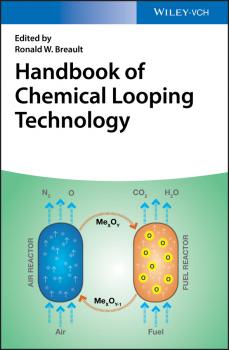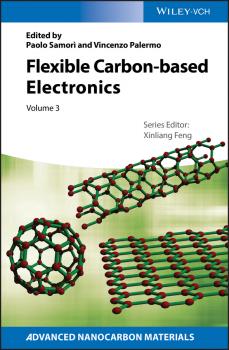Техническая литература
Различные книги в жанре Техническая литератураHandbook of Chemical Looping Technology
This comprehensive and up-to-date handbook on this highly topical field, covering everything from new process concepts to commercial applications. Describing novel developments as well as established methods, the authors start with the evaluation of different oxygen carriers and subsequently illuminate various technological concepts for the energy conversion process. They then go on to discuss the potential for commercial applications in gaseous, coal, and fuel combustion processes in industry. The result is an invaluable source for every scientist in the field, from inorganic chemists in academia to chemical engineers in industry.
Flexible Carbon-based Electronics
This third volume in the Advanced Nanocarbon Materials series covers the topic of flexible electronics both from a materials and an applications perspective. Comprehensive in its scope, the monograph examines organic, inorganic and composite materials with a section devoted to carbon-based materials with a special focus on the generation and properties of 2D materials. It also presents carbon modifications and derivatives, such as carbon nanotubes, graphene oxide and diamonds. In terms of the topical applications covered these include, but are not limited to, flexible displays, organic electronics, transistors, integrated circuits, semiconductors and solar cells. These offer perspectives for today?s energy and healthcare challenges, such as electrochemical energy storage and wearable devices. Finally, a section on fundamental properties and characterization approaches of flexible electronics rounds off the book. Each contribution points out the importance of the structure-function relationship for the target-oriented fabrication of electronic devices, enabling the design of complex components.
Taschenbuch für den Tunnelbau 2019
Deutsche Gesellschaft für Geotechnik e.V. / German Geotechnical Society
Das Taschenbuch für den Tunnelbau ist seit vielen Jahren ein praxisorientierter Ratgeber für Auftraggeber, Planer und Bauausführende. Es greift aktuelle Entwicklungen und Problemstellungen auf, präsentiert innovative Lösungen und dokumentiert dabei den jeweils erreichten Stand der Technik. Die Beiträge in der Ausgabe 2019 behandeln die Themenbereiche Konventioneller bergmännischer Tunnelbau, maschineller Tunnelbau, Digitalisierung im Tunnelbau, Baustoffe und Bauteile sowie Vertragswesen, Wirtschaftlichkeit und Akzeptanz. Die Rubrik Digitalisierung im Tunnelbau wird ab Ausgabe 2019 neu eingeführt und erhält u.a. zwei Beiträge zur Anwendung von BIM im Tunnelbau. Ein Einkaufsführer zum Thema Tunnelbaubedarf rundet das Buch ab
Empfehlungen des Arbeitskreises "Baugrunddydnamik"
Die in dem Sammelband «Empfehlungen des Arbeitskreises 1.4 Baugrunddynamik» der Deutschen Gesellschaft für Geotechnik e.V. (DGGT) zusammengefassten Empfehlungen haben das Ziel, das Vorgehen bei baugrunddynamischen Aufgaben zu vereinheitlichen. Ferner geben Sie Hinweise, wie durch angemessene baugrunddynamische Untersuchungen die Beeinträchtigung von Einrichtungen, Schäden an Bauwerken und Anlagen sowie störende Umwelteinwirkungen auf Menschen und Geräte vermieden werden können. Die vorliegenden Empfehlungen stellen den neuesten Stand von Wissenschaft und Technik auf dem Gebiet der Baugrunddynamik dar. Sie beruhen auf gesicherten Erkenntnissen, die einen empirischen Nachweis einschließen, d. h. es liegen für diese Empfehlungen auch praktische Erprobungen vor. Sie sind daher Bestandteil der ?allgemein anerkannten Regeln der Technik?. Für die vorliegende zweite Ausgabe wurden die Empfehlungen erneut umfangreich überarbeitet und um zwei Teile ergänzt.
Bewertung und Verstärkung von Stahlbetontragwerken
Der Umgang mit vorhandener Bausubstanz gehört zu den täglichen Aufgaben für Bauingenieure und Architekten. Das vorliegende Buch vermittelt die notwendigen Kenntnisse der verschiedenen Methoden der Zustandserfassung und Bewertung von Bauteilen und Tragwerk sowie der Planung von Instandsetzungs- und Ertüchtigungsmaßnahmen. Ein Überblick über die Entwicklung der Bemessungsregeln und Materialkennwerte im Stahlbetonbau hilft bei der Auswertung von Bestandsunterlagen. Zahlreiche anschauliche Beispiele machen das Buch zu einem unverzichtbaren Leitfaden für die Planung und zu einem wertvollen Begleiter für das Studium. Für die zweite Auflage wurden die Inhalte mit Bezug zu den gültigen technischen Regelwerken vollständig aktualisiert. Darüber hinaus wurden einige Teile zum besseren Verständnis vollständig überarbeitet und neue Abschnitte aufgenommen.
Polymers from Plant Oils
The purpose of this monograph is to provide a thorough outlook on the topic related to the synthesis and characterization of original macromolecular materials derived from plant oils, an important part of the broader steadily growing discipline of polymers from renewable resources. The interest in vegetable oils as sources of biodiesel and materials has witnessed a remarkable growth of scientific and industrial interest since the beginning of the third millennium responding to the pressing drive to implement sustainability in the energy and materials sectors. The book highlights the most relevant strategies being pursued to elaborate polymers derived from a variety of common oils, by direct activation or through chemical modifications yielding novel monomers. Because glycerol is the main byproduct of biodiesel production, it is treated here as the other logical source of macromolecular synthesis. Each of the different approaches is illustrated by an introductory layout of the underlying chemical mechanisms, followed by examples of notable achievements in terms of the properties and potential applications of the ensuing materials, which span a wide range of structures and performances. In particular, original pathways involving click-chemistry reactions as thiol-ene and Diels-Alder couplings and metathesis polymerizations are discussed and shown to reflect the involvement of a growing number of research programs worldwide. It is important to underline that the book is not a scientific review covering the details of all relevant literature, but instead a reasoned and well-documented presentation of the state-of-the-art aimed at professionals in the field of polymer science, as well as at both undergraduate and graduate students and, more generally at chemists interested in the rational exploitation of renewable resources.
3D Industrial Printing with Polymers
3D industrial printing has become mainstream in manufacturing. This unique book is the first to focus on polymers as the printing material. The scientific literature with respect to 3D printing is collated in this monograph. The book opens with a chapter on foundational issues such and presents a broad overview of 3D printing procedures and the materials used therein. In particular, the methods of 3d printing are discussed and the polymers and composites used for 3d printing are detailed. The book details the main fields of applications areas which include electric and magnetic uses, medical applications, and pharmaceutical applications. Electric and magnetic uses include electronic materials, actuators, piezoelectric materials, antennas, batteries and fuel cells. Medical applications are organ manufacturing, bone repair materials, drug-eluting coronary stents, and dental applications. The pharmaceutical applications are composite tablets, transdermal drug delivery, and patient-specific liquid capsules. A special chapter deals with the growing aircraft and automotive uses for 3D printing, such as with manufacturing of aircraft parts and aircraft cabins. In the field of cars, 3D printing is gaining importance for automotive parts (brake components, drives), for the fabrication of automotive repair systems, and even 3D printed vehicles.









